 2004 Buick Rainier (GMT 360) Dimensions, Size & Specs
2004 Buick Rainier (GMT 360) Dimensions, Size & SpecsMeasurements of the 2004 Buick Rainier, engineered for optimal performance and comfort
| Dimensions | |
|---|---|
| Length: | 4871 mm191.8 in16.0 ft |
| Width: | 1894 mm74.6 in6.2 ft |
| Height: | 1894 mm74.6 in6.2 ft |
| Trunk Capacity: | 1127 liter39.8 cu ft |
| Trunk Capacity (Max): | 2268 liter80.1 cu ft |
| Weight Specifications | |
| Curb Weight: | 2065-2165 kg4553-4773 lbs |
| Maximal permitted Weight: | 2517-2812 kg5549-6199 lbs |
| Tire Specifications | |
| Rims Size: | 17-inch rims:
|
| Tire Sizes: |
|
The Buick Rainier (GMT 360) is a midsize SUV produced between 2004 and 2007, known for its balanced design combining comfort, utility, and robust performance. Measuring 4871 mm (192 inches) in length, 1894 mm (74.5 inches) in width, and 1894 mm (74.5 inches) in height, the Rainier offers a spacious interior typical of SUVs in its class. Its curb weight ranges between 2065 kg (4553 lbs) and 2165 kg (4773 lbs), while the maximum authorized weight spans from 2517 kg (5551 lbs) to 2812 kg (6200 lbs), reflecting its solid build capable of handling substantial loads and passengers. The luggage capacity is notable for a midsize SUV, with 1127 liters (39.8 cubic feet) available behind the rear seats, expanding dramatically to 2268 liters (80 cubic feet) when the rear seats are folded down, providing ample cargo space for family trips or heavy gear. The Buick Rainier rides on 17-inch rims (6J x 17) equipped with tires sized 245/65 R17 or alternatively 255/60 R17, delivering good road grip and a comfortable ride. Overall, the 2004-2007 Buick Rainier (GMT 360) is a well-rounded SUV offering generous space, solid weight capacity, and tire dimensions that suit its versatile usage, making it a practical choice for drivers seeking a reliable and roomy mid-size SUV.
Discover the standout features that make the 2004 Buick Rainier a leader in its class
Have a question? Please check our knowledgebase first.
The 2004–2007 Buick Rainier (GMT 360) measures 4871 mm (191.8 inches) in length, 1894 mm (74.5 inches) in width, and 1894 mm (74.5 inches) in height. These exterior measurements place it solidly in the midsize SUV category, offering a balanced size for passengers and cargo.
The curb weight of the Buick Rainier (GMT 360) ranges between 2065 kg and 2165 kg (approximately 4553 lbs to 4773 lbs), depending on the trim and equipment. Its maximum gross vehicle weight rating (GVWR) spans from 2517 kg to 2812 kg (about 5550 lbs to 6200 lbs). This robust weight allowance supports both passenger comfort and cargo load reliably.
With all rear seats upright, the Buick Rainier provides 1127 liters (about 39.8 cubic feet) of luggage capacity. When the rear seats are folded down, this capacity significantly expands to 2268 liters (approximately 80 cubic feet), allowing for versatile cargo configurations to accommodate larger items or increased storage needs.
The Buick Rainier comes with standard rim sizes of 6J x 17. Tire sizes offered include 245/65 R17 and 255/60 R17, providing a good balance between road grip, comfort, and off-road capabilities suitable for a midsize SUV.
A typical residential garage is about 2.4 meters (8 feet) wide and 5.5 to 6 meters (18 to 20 feet) long. The Buick Rainier, with a width of 1.894 meters (74.5 inches) and length of 4.871 meters (191.8 inches), fits comfortably within most standard garages. However, the height of 1.894 meters (74.5 inches) should also be checked against garage door clearance, which often ranges around 2.1 to 2.4 meters (7 to 8 feet), so it generally fits indoors without issue.
The Buick Rainier was introduced in 2004, replacing the Buick Rendezvous. Compared to the Rendezvous, the Rainier is slightly larger with an overall length of 4871 mm (191.8 inches) versus approximately 4733 mm (186.3 inches) for the Rendezvous. The Rainier offers a wider and taller body (1894 mm or 74.5 inches width and height) compared to the previous generation, providing more interior space and a more commanding road presence. This upsize enhances passenger comfort and cargo capacity, reflecting Buick's aim to compete more aggressively in the midsize SUV segment.
During its production years, the Buick Rainier's size positioned it comfortably among midsize SUVs like the Chevrolet TrailBlazer, GMC Envoy, and Ford Explorer. Its length of 4871 mm (191.8 inches) matches well with competitors, which typically ranged from about 4700 mm to 4920 mm (185 to 194 inches). Its width and height of 1894 mm (74.5 inches) were also typical for this vehicle class, offering ample passenger and cargo space. This size gives the Rainier competitive road presence and functionality, balancing maneuverability with interior spaciousness.
The Buick Rainier typically seats five passengers comfortably with two front bucket seats and a rear bench seat. The vehicle's exterior dimensions allow for generous interior space, which translates to good headroom, legroom, and shoulder room, enhancing overall passenger comfort on longer trips. Its height and width advantage also aid in creating an airy and spacious cabin while providing easy ingress and egress.
The Buick Rainier (GMT 360) weighs between 2065 to 2165 kg (4553 to 4773 lbs) and has a robust frame with dimensions designed for a midsize SUV. While it comes with features like available all-wheel drive and a sturdy chassis, its size (nearly 4.9 meters long and 1.89 meters wide) and weight mean that it is capable but may not be as nimble as smaller SUVs in tight off-road conditions. For moderate off-road use, the Rainier holds its own, but serious off-road enthusiasts might consider lighter, more specialized vehicles.
The Buick Rainier offers two main tire size options: 245/65 R17 and 255/60 R17. Both sizes fit 17-inch rims, but the 245/65 R17 tires provide a slightly taller sidewall, which generally improves ride comfort by absorbing road irregularities better. On the other hand, the 255/60 R17 tires have a wider tread, enhancing grip and stability during cornering and offering potentially better traction. The choice depends on driver preference between comfort (taller sidewall) and handling performance (wider tire). Both choices complement the Rainier's midsize SUV characteristics well.
Discover similar sized cars.
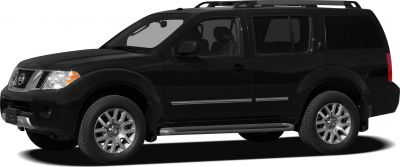
| Production: | 2010-2013 |
|---|---|
| Model Year: | 2010 |
| Length: | 4813 mm189.5 in |
| Width: | 1848 mm72.8 in |
| Height: | 1846-1858 mm72.7-73.1 in |
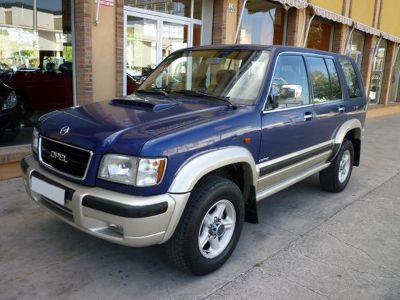
| Production: | 1998-1999 |
|---|---|
| Model Year: | 1998 |
| Length: | 4365-4795 mm171.9-188.8 in |
| Width: | 1835 mm72.2 in |
| Height: | 1830-1840 mm72.0-72.4 in |
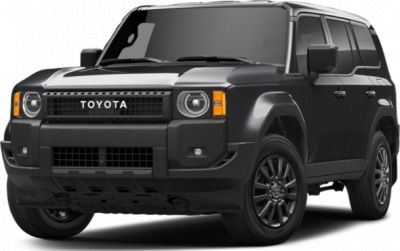
| Production: | 2024-present |
|---|---|
| Model Year: | 2024 |
| Length: | 4925 mm193.9 in |
| Width: | 2139 mm84.2 in |
| Height: | 1925-1933 mm75.8-76.1 in |

| Production: | 2020-present |
|---|---|
| Model Year: | 2020 |
| Length: | 4795 mm188.8 in |
| Width: | 1855 mm73.0 in |
| Height: | 1835 mm72.2 in |
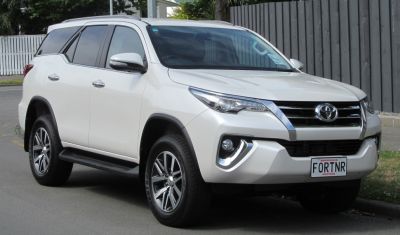
| Production: | 2015-2020 |
|---|---|
| Model Year: | 2015 |
| Length: | 4795 mm188.8 in |
| Width: | 1855 mm73.0 in |
| Height: | 1835 mm72.2 in |
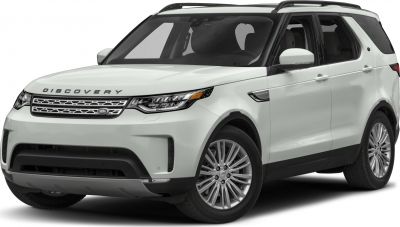
| Production: | 2013-2017 |
|---|---|
| Model Year: | 2013 |
| Length: | 4829 mm190.1 in |
| Width: | 2053 mm80.8 in |
| Height: | 1887 mm74.3 in |
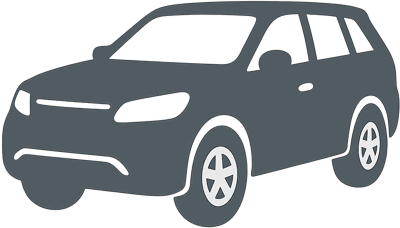
| Production: | 1998-1999 |
|---|---|
| Model Year: | 1998 |
| Length: | 4795 mm188.8 in |
| Width: | 1835 mm72.2 in |
| Height: | 1840 mm72.4 in |
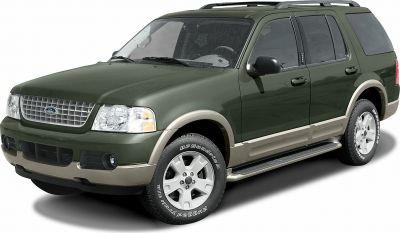
| Production: | 2002-2005 |
|---|---|
| Model Year: | 2002 |
| Length: | 4813 mm189.5 in |
| Width: | 1832 mm72.1 in |
| Height: | 1814-1830 mm71.4-72.0 in |
